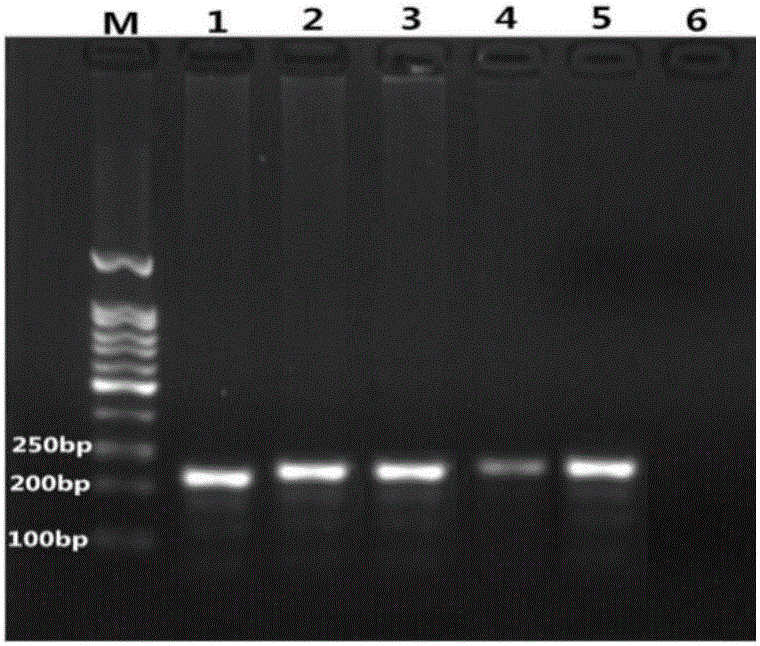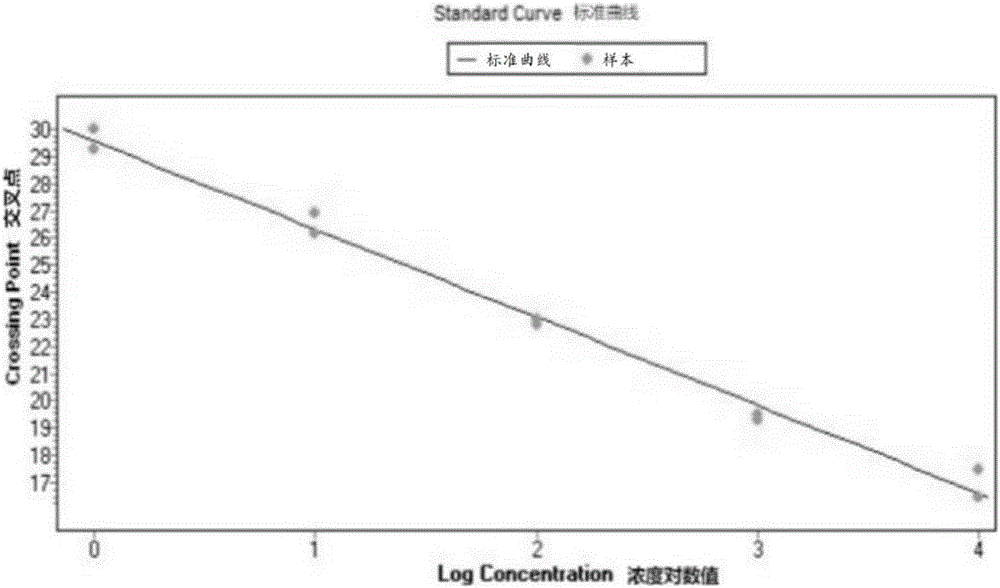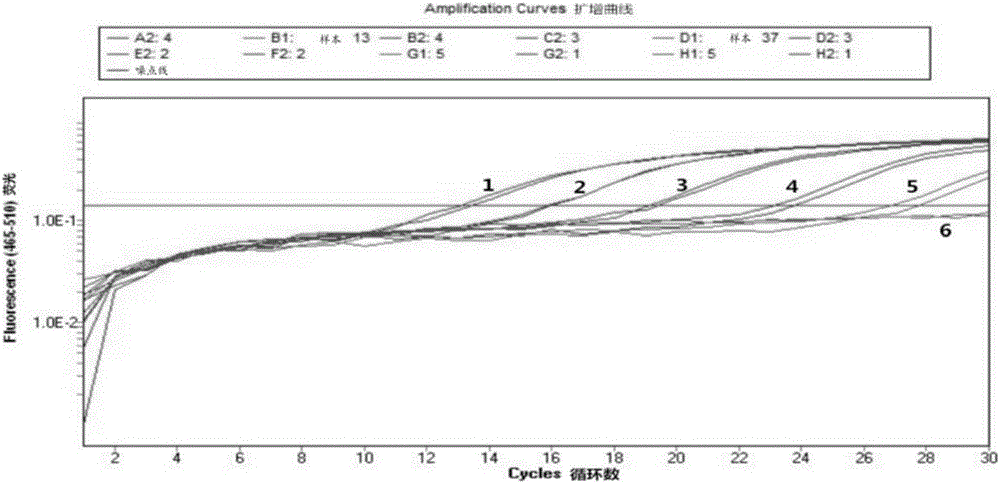Kit for detecting enterocytozoonhepatopenaei
A shrimp Enterocytoplasma hepatobilis, kit technology, applied in microorganism-based methods, microbial determination/inspection, microorganisms, etc., can solve the problems of aggravated horizontal transmission, food safety objection, and the incidence and loss of EHP, and achieves a reduction in the requirements, ensure safety, and shorten the effect of testing time
- Summary
- Abstract
- Description
- Claims
- Application Information
AI Technical Summary
Problems solved by technology
Method used
Image
Examples
Embodiment Construction
[0029] 1Materials and methods
[0030] 1.1 Experimental materials
[0031] The positive samples of Enterosporium were collected from Xiangshan and Linhai Litopenaeus vannamei with intestinal worm samples. Sample numbers: NB2015-07, TZ2015-02. After PCR detection and sequencing, it was confirmed that they were infected by Enterosporium hepatica. ; Intestinal cytoplasmic nucleic acid extraction uses SH09-D nucleic acid extraction box or the nucleic acid extraction solution of the present invention for extraction; intestinal cyst gene cloning pMD19-T vector, Escherichia coli competent cells, plasmid recovery kit purchased from Beijing Quanshijin Bio Technology Co., Ltd., high-fidelity pfu premix and fluorescence quantitative PCR Taq enzyme premix are products of Nanjing Kangwei Century Biotechnology Co., Ltd.; PCR tubes and suction nozzles for experiments are all products of Axygen.
[0032] The fluorescence quantitative PCR instrument is Roche LC480, the PCR instrument is Hangzhou Lan...
PUM
| Property | Measurement | Unit |
|---|---|---|
| Sensitivity | aaaaa | aaaaa |
| Sensitivity | aaaaa | aaaaa |
Abstract
Description
Claims
Application Information
 Login to View More
Login to View More - R&D
- Intellectual Property
- Life Sciences
- Materials
- Tech Scout
- Unparalleled Data Quality
- Higher Quality Content
- 60% Fewer Hallucinations
Browse by: Latest US Patents, China's latest patents, Technical Efficacy Thesaurus, Application Domain, Technology Topic, Popular Technical Reports.
© 2025 PatSnap. All rights reserved.Legal|Privacy policy|Modern Slavery Act Transparency Statement|Sitemap|About US| Contact US: help@patsnap.com



